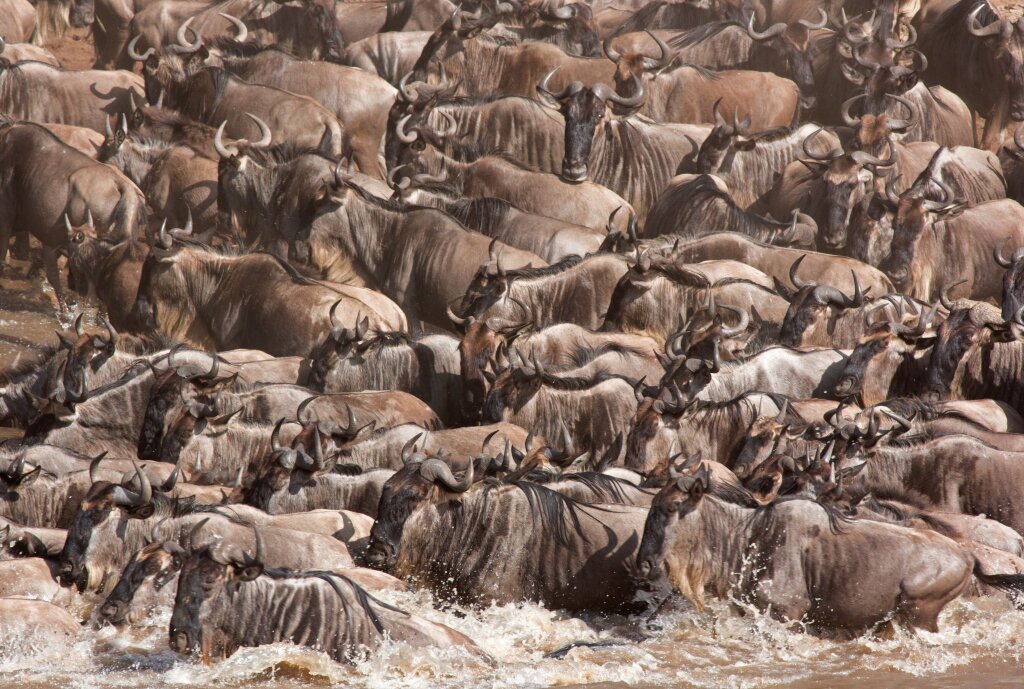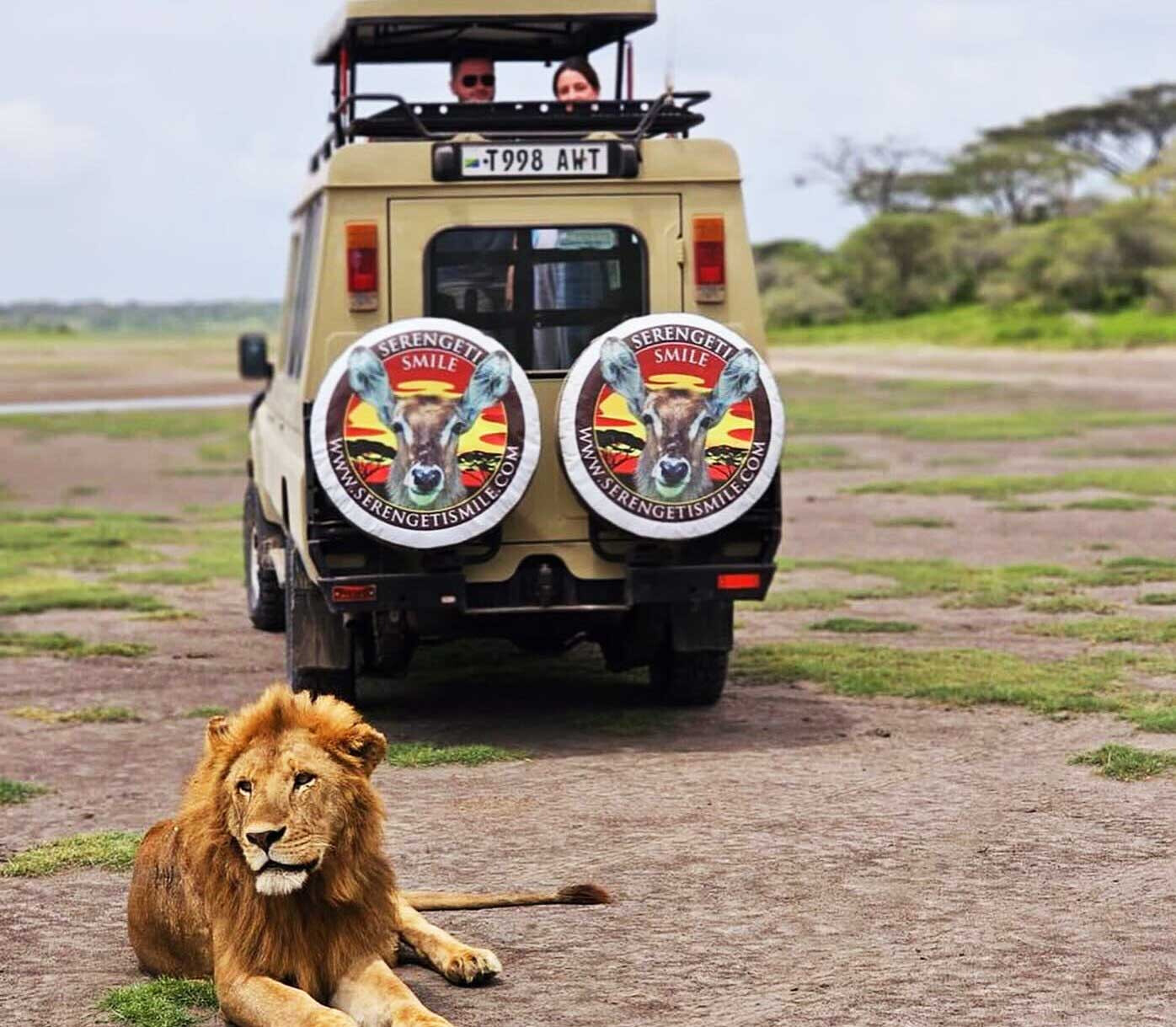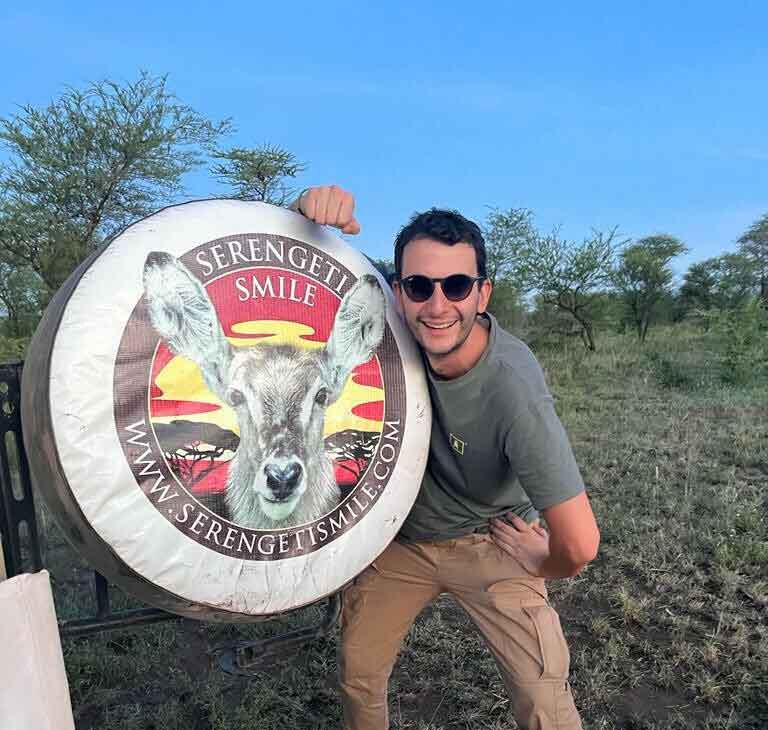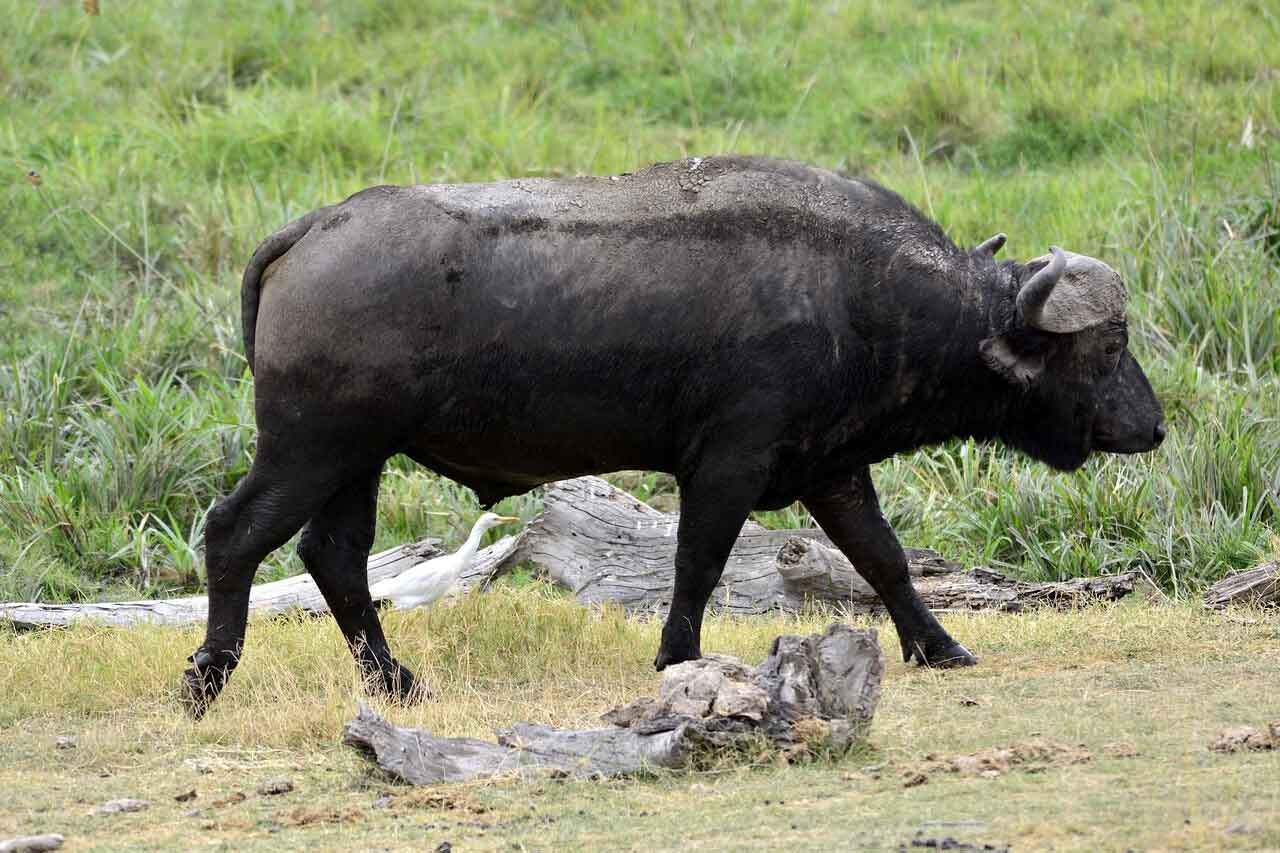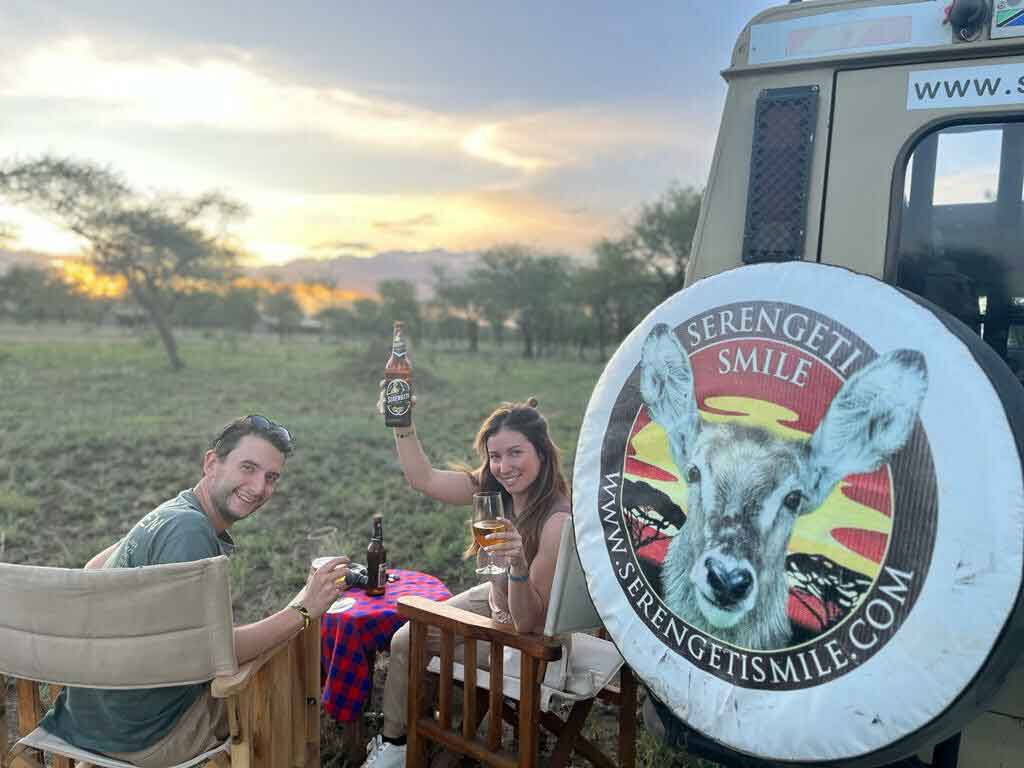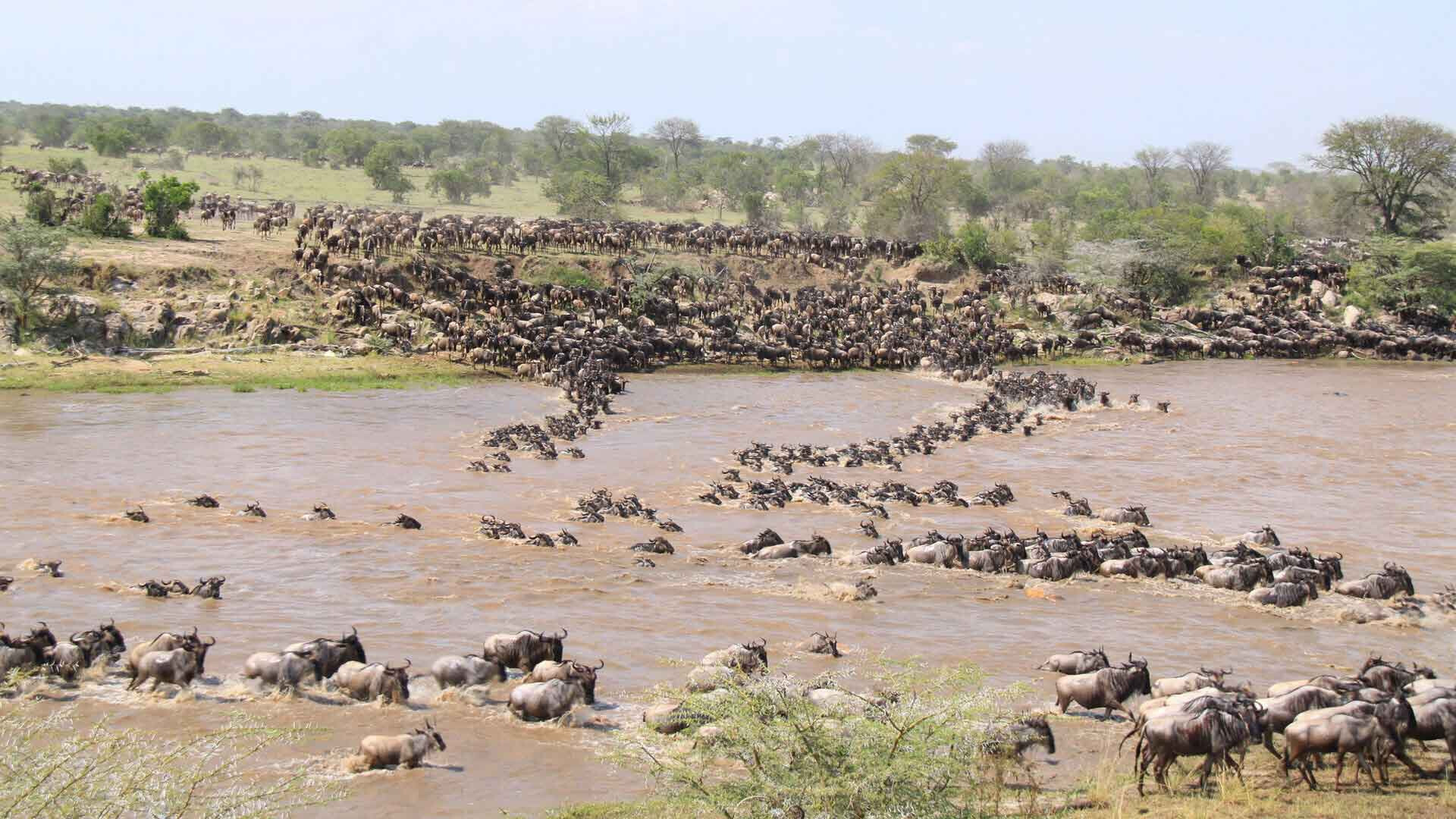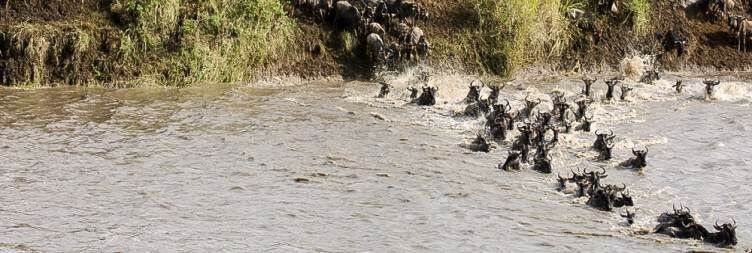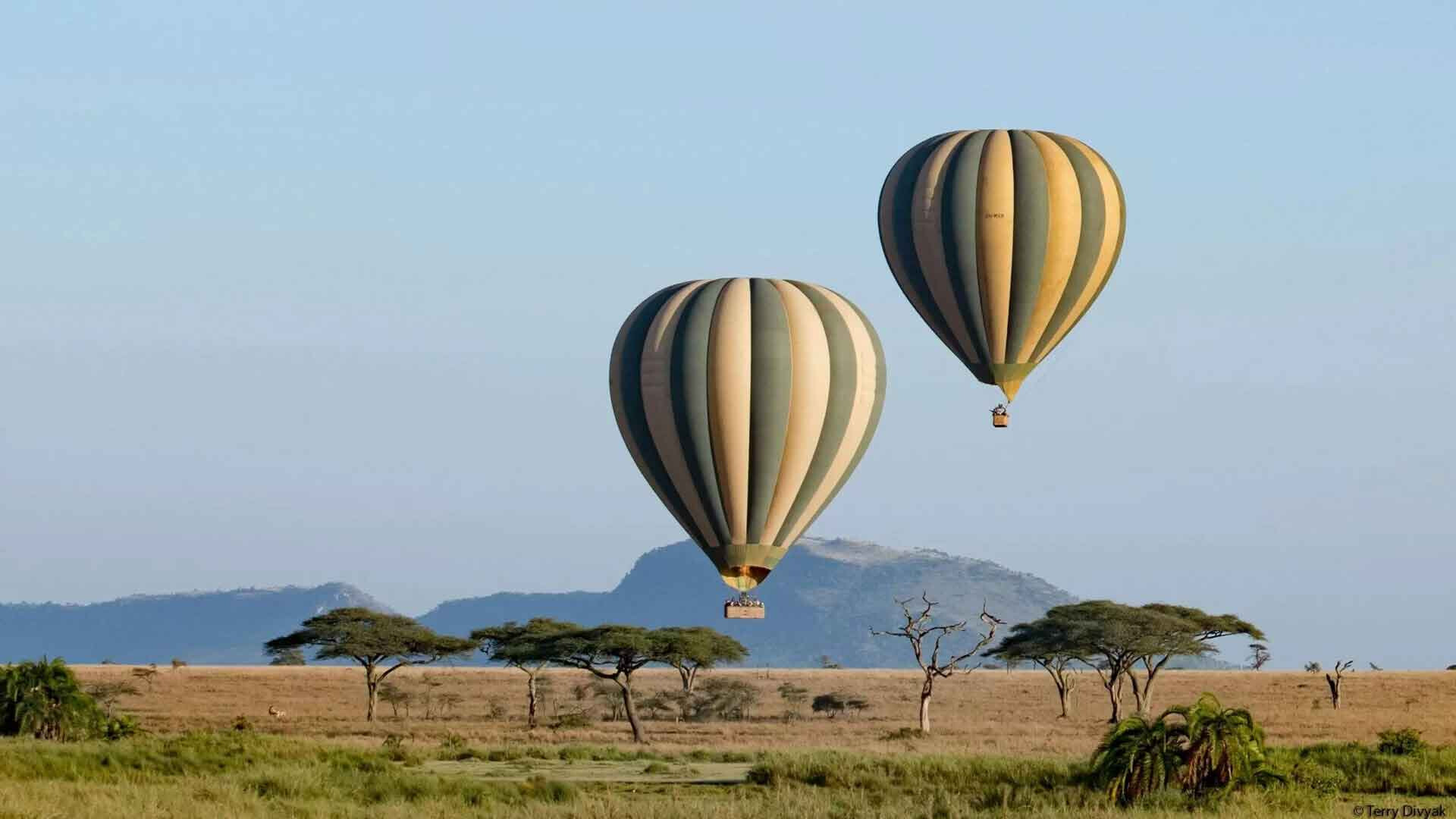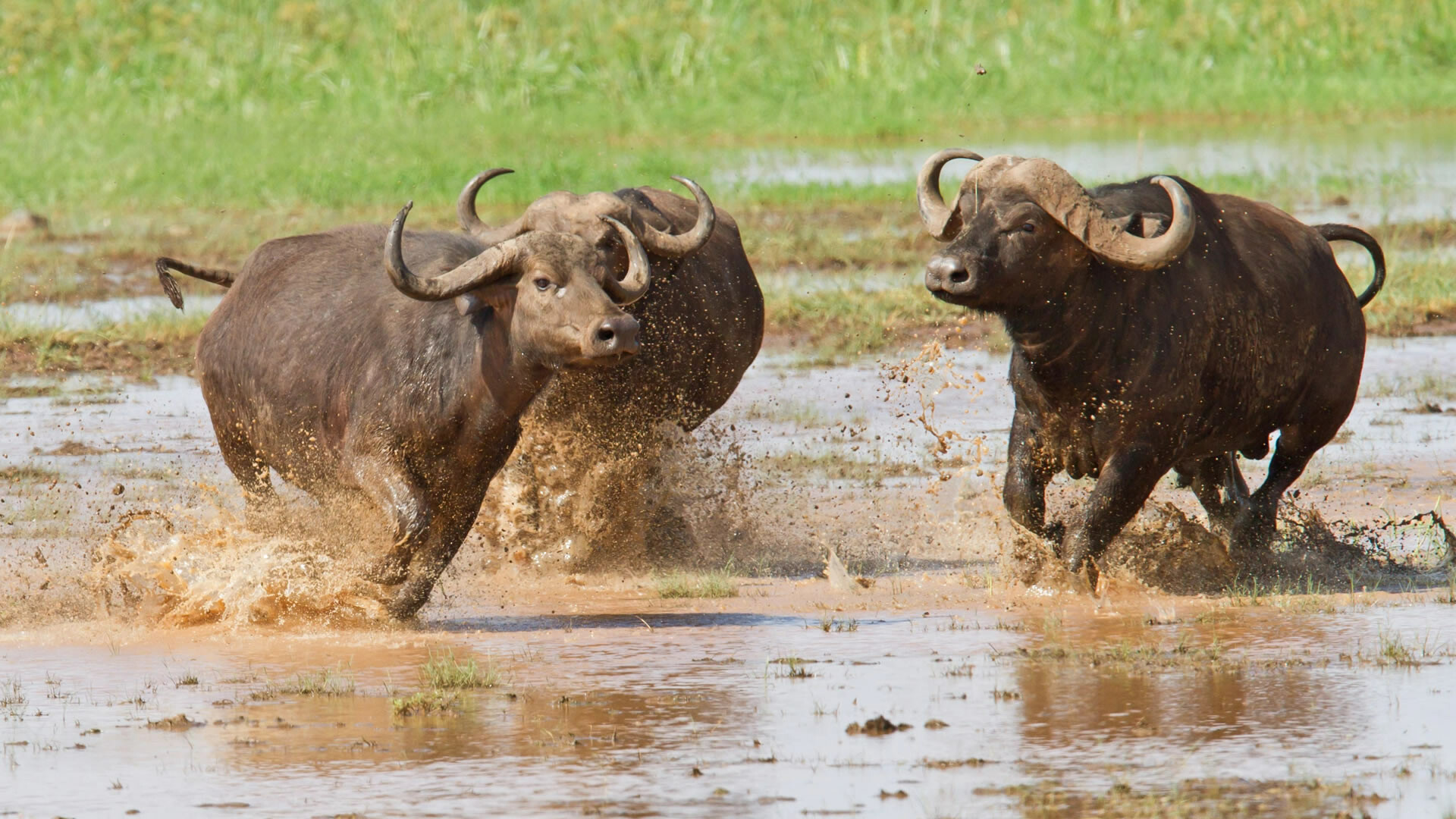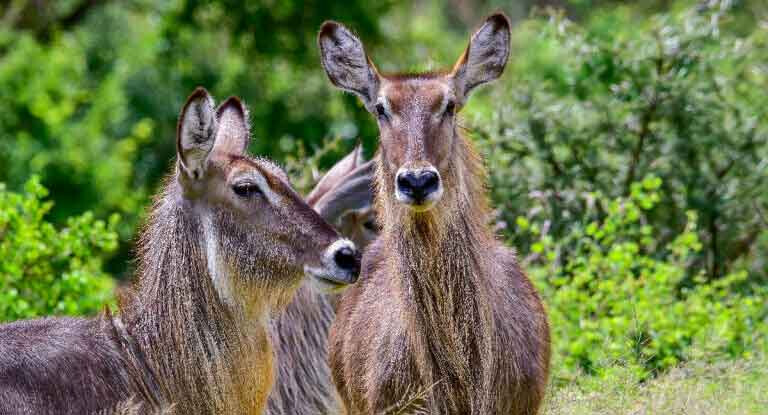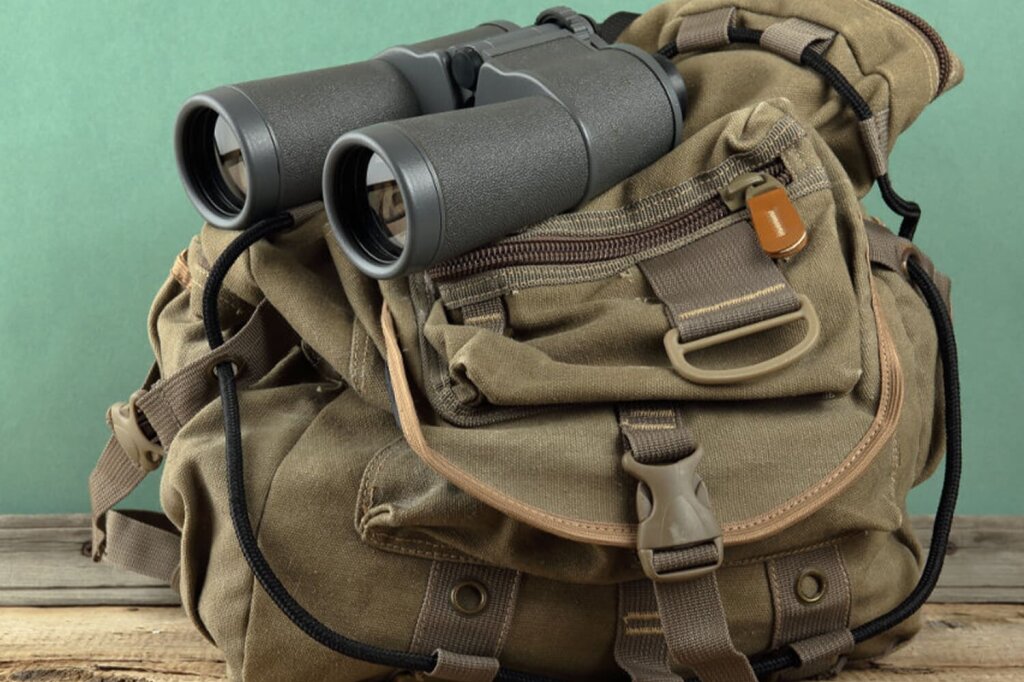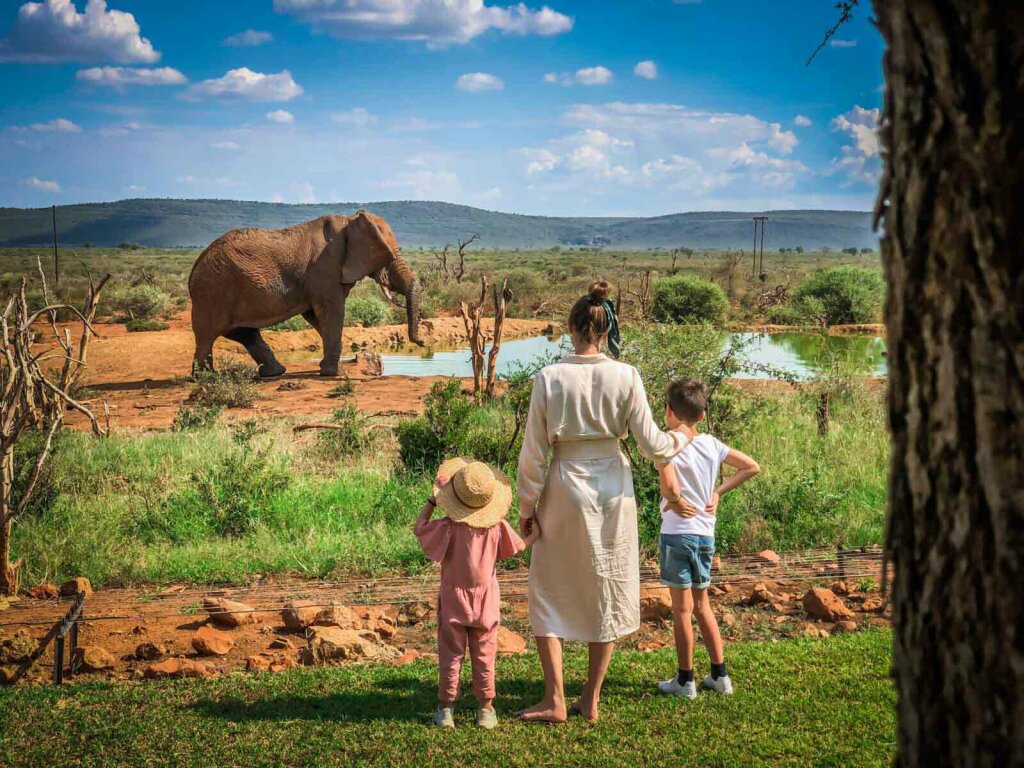The Great Wildebeest Migration in Serengeti
A Once-in-a-Lifetime Wildlife Adventure
The Great Wildebeest Migration in Serengeti is one of the most incredible natural spectacles in the world. Over 2 million animals (wildebeest, zebra, and gazelle) migrate in a clockwise direction across the ecosystems of the Serengeti (Tanzania) and the Masai Mara (Kenya).
Embark on an annual journey of over 1,000 kilometers in search of fresh grazing and water. This epic journey takes them through some of the most beautiful and diverse landscapes in Africa, including the Serengeti National Park, the Masai Mara National Reserve, and the Grumeti Reserve.
What is The Great Wildebeest Migration?
The Great Migration is the journey of enormous herds of wildebeest through the Serengeti, accompanied by big herds of zebra and smaller herds of Grant's gazelle, Thomson's gazelle, eland and impala. These move in a pretty regular yearly sequence.
They move all year, looking for new pasture and water. The precise time of the Serengeti wildebeest migration is totally reliant on annual rainfall patterns.
Why Do Wildebeest Migrate?
The massive wildebeest herd’s 800-kilometer movement is the world’s greatest animal migration. The migration corresponds with the greening of nutritious grasses in the short grass plains during the wet season. These regions are safer since predators can be easily identified, making them excellent for calving.
However, when the plains dry up, the wildebeest are forced to migrate to the western corridor in search of better pastures. The Northern stretch of the habitat receives the most rainfall, but the grasses are the least nutritious.
When Do Wildebeest Migrate?
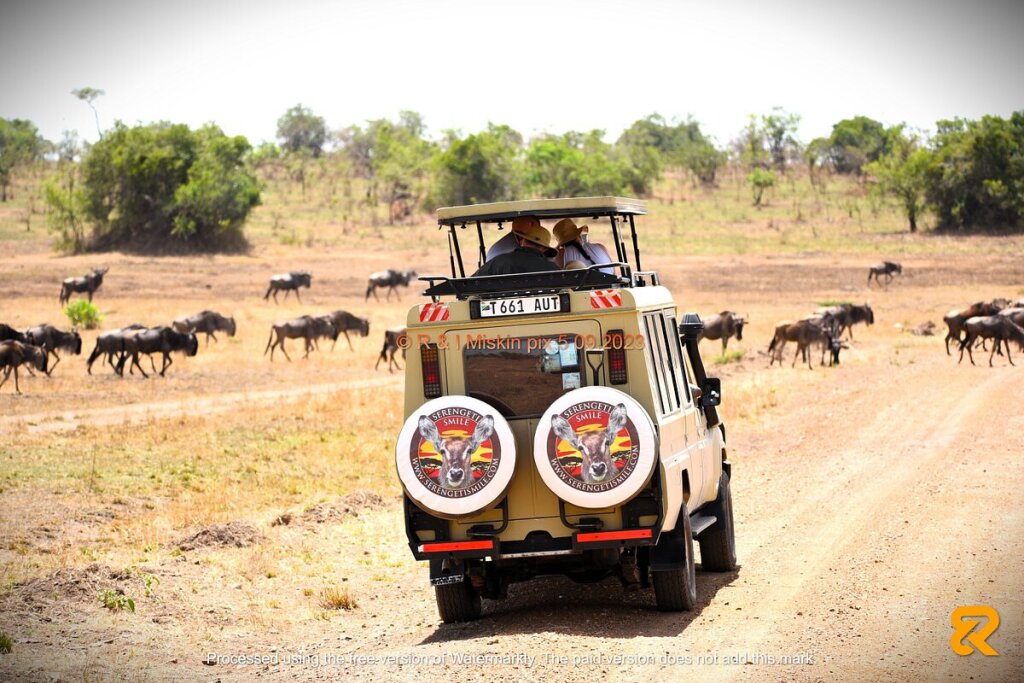
When is The Best Time to See The Great Wildebeest Migration in Serengeti?
It is entirely up to you whether you want to schedule your safari to Serengeti around the Great Migration. As I explained before Serengeti National Park Great Migration is a year-round visit because of its huge size and surprised animal watching.
The chance of being at an exact location of the Great Migration herd crossing a river either Grumeti or Mara river are small. Furthermore, the timing of herd migrations cannot be assured.
However, if you select the correct region of Serengeti: The Southeast and Ndutu from December to May, the Western Corridor from May to July, the Serengeti Mara area from July to October and the Northern Serengeti whereby large herds of wildebeest and their companions should be easily spotted.
The Great Wildebeest Migration: Month By Month
General Summary of the great wildebeest migration Tanzania
The Great Migration is a true representation of the circle of life. The cycle continues throughout the year as the herds follow the rains in search of food, water and a safe place to give birth. What you can expect to see varies month by month.
| Month | Description |
|---|---|
| January: | Herds spread over the Southern Serengeti's short-grass plains to feed. |
| February: | They disperse throughout the short- grass plains with the majority calving within 3- week span. |
| March: | Remains widespread over the Southern Serengeti, Loliondo and Ngorongoro Conservation Area (NCA) short-grass plains. |
| April: | The herds start to migrate North, passing through the Southwest of the Central Serengeti /Moru Kopjes and Seronera regions. |
| May: | The migration passes through Seronera on its way to the Western Corridor. |
| June: | Herds congregate in the western corridor before crossing the Grumeti River. |
| July: | Some cross the Grumeti & proceed through Grumeti Reserve; others head North in the park. |
| August: | Herds move through Ikorongo and into the extreme North-west of the Serengeti National Park. |
| September: | Herds in the Northern Serengeti National Park & in Kenya's Maasai Mara. |
| October: | Grazing in the far north of the Serengeti and across in the Mara |
| November: | Moving South via Loliondo, on the East side of the Serengeti National Park |
| December: | Arriving on the East side of the short-grass plains in time for the rains. Then the whole Great Migration starts again |
Serengeti National Park Wildebeest Migration
Understand Serengeti National Park Great Migration Time of Year
When planning your Safari to Serengeti National Park, you will most likely want to include watching the Great Migration in your Serengeti safari itinerary. So, how can you ensure that you are present when it occurs? The quick answer is that you can't. The Great Migration is described in details below and this is how often occurs.
The yearly migration of two million ungulates, primarily wildebeest but also massive herds of zebra, Thomson's gazelle, Grant's gazelle and eland through Serengeti National Park is the biggest natural display of its kind in Africa, if not the world. Although there are seasonal fluctuations, the Serengeti Great Migration follows a fairly predictable yearly cycle determined by local rainfall trends. The Great Migration cycle is divided into the following phases:
DECEMBER - APRIL
The primary calving grounds may be found Southeast of Seronera (Ndutu), where typical Serengeti grasslands extend all the way to the Ndutu region near Ngorongoro Conservation Area. The short rains in November and December prompted their relocation to this region.
The wildebeest stay in this area until the lengthy rains finish in late April or early May. The good news is that this portion of Serengeti National Park is relatively accessible and the environment becomes lush during this time of year.
During the February is normally calving season in the Ndutu area and the Southeastern plains, making it the greatest time to visit. Because there are so many wildebeest, zebra and other ungulates, they give birth to so many calves whereby the sight acts as a magnet for tourists.
MAY- JULY
After feasting on the short green grasses of the Southern Serengeti and having given birth to their offspring, the wildebeest begin preparing for their 800-kilometer journey.
The real migration starting date might be between late April and early June. This is the moment to witness one of the world's largest natural phenomena whereby more than a million marching animals in a column up to 40 kilometers long.
The herds migrate towards the Western Corridor, where they encounter the first significant challenge when crossing the Grumeti River as many animals die during the crossing passage since the area is populated of giant crocodiles waiting for herds to cross.
AUGUST- SEPTEMBER
After crossing Grumeti River, the herd continues to Northern Serengeti and begins crossing the Mara River in September. Many memorable Great Migration photographs have been taken near the Mara River crossing. Following this crossing, the herds go to Kenya's northwest plains and the Masai Mara National Reserve.
The months of August and September are considered good months to visit Serengeti National Park and witness the Great Migration crossing Mara River, as the herd migrate towards Kenya's Masai Mara.
Migration patterns indicate that around half of the herd remains on the Tanzanian border in the Mara Serengeti region. During this time, smaller herds of wildebeest can be found.
OCTOBER- NOVEMBER
Crossing the Mara River Northbound requires the herd to cross the river one more time before continuing their journey Southward. This normally happens in October, during this time the herd cross the northern plains and the Lobo region.
This region of Serengeti National Park is rarely visited, so if you want to view the migration in peace and quiet, this is the time to go. In late November, the wildebeest return to the short-grass plains and calving grounds around Ndutu. And then Great Migration cycle starts again.
Serengeti Wildebeest Migration: Calving Season
The migration begins in the southern Serengeti, where the wildebeest give birth to their calves. Serengeti wildebeest migration calving season typically occurs from late January to March, and it is a time of great activity and excitement.
The wildebeest calves are born with their eyes open and are able to walk within minutes of being born. This allows them to join the herd quickly and avoid predators.
Journey North: The Great Wildebeest Migration
After calving, the wildebeest start to move north in search of fresh water and grazing land. The migration is a slow and steady process, and the animals may travel only a few miles each day.
The wildebeest are followed by a retinue of predators, including lions, hyenas, and cheetahs. These predators feast on the weak and the young, and they help to keep the wildebeest population in check.
Crossing the Mara River
One of the most dramatic moments of the migration is when the wildebeest cross the Mara River. The Mara River is a major obstacle for the wildebeest, and it is a place where many animals are killed by crocodiles. However, the wildebeest are determined to cross the river, and they often do so in large numbers.
Arrival in the Masai Mara
After crossing the Mara River, the wildebeest reach the Masai Mara in Kenya. The Masai Mara is a vast and fertile grassland, and it is a paradise for the wildebeest. The animals spend several months grazing on the lush grasses of the Masai Mara, and they also give birth to their calves here.
Witnessing The Great Wildebeest Migration in Serengeti
Witnessing the Great Wildebeest Migration is a truly unforgettable experience. Visitors can observe the herds from a variety of vantage points, including hot air balloons, game drives, and walking safaris.
There are also a number of lodges and camps located within the Serengeti National Park that provide excellent opportunities for viewing the migration.
The Great Wildebeest Migration is one of the most spectacular natural events in the world. It is a vital part of the Serengeti-Mara ecosystem, and it is a major tourist attraction.
 EN
EN
 FR
FR
 IT
IT
